Marvel At The Sacred Beauty Of Banh It Tower In The Heart Of Binh Dinh
Suppose you are on a journey from the South to the North when passing Tuy Phuoc District in Binh Dinh Province at Ba Di Bridge. In that case, you are fortunate enough to witness the stunning Cham Towers in the distance highlighted with the recognizable red bricks amidst the endless green mountains.
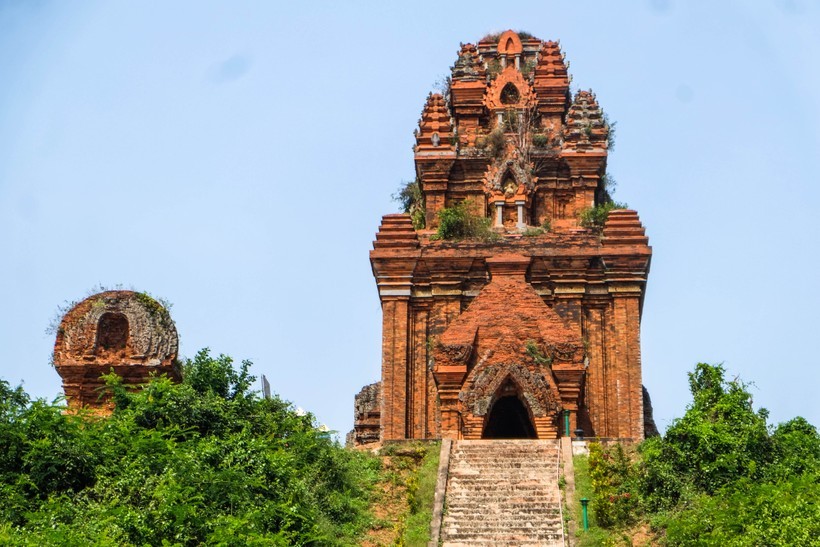 |
| The complex includes four towers built on a peak of a hill in Dai Loc Hamlet, Phuoc Hiep Commune, Tuy Phuoc District. Photo: Hoang Vinh |
In the late 11th century and early 12th century in Phuoc Hiep Commune, Tuy Phuoc, the tower was built on top of a hill lying between two branches of Kon River, Tan An, and Ganh Bridge, next to National Highway 1A, 20km away from Quy Nhon City.
This is a complex of the four largest towers, including the main temple (Kala), the Gate Tower (Gopura), the Fire Tower (Kosagrha), and the Bia Tower (Posah). It was formerly the center of the three ancient Champa citadels of the Vijaya dynasty: Thi Nai Citadel, Cha Citadel, and Do Ban citadel, Vijaya is where all the economic activities happen, and Thi Nai Port is a commercial center.
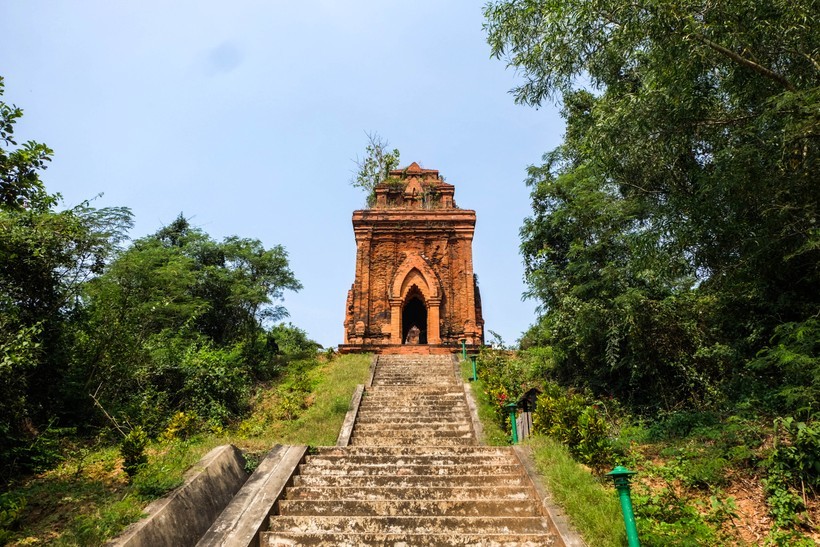 |
| The beautiful image of Gate Tower (Gopura). Photo: Hoang Vinh |
Upon doing research on this complex architecture, the French called it Tour d’Argent, which means Silver Tower. Each of the four towers presents a different style and shade.
Banh It Tower is a unique architectural complex, with high artistic value and is considered a masterpiece in Champa architectural art. This cluster of towers is recognized by the Ministry of Culture and Information as an architectural and art vestige in 1982.
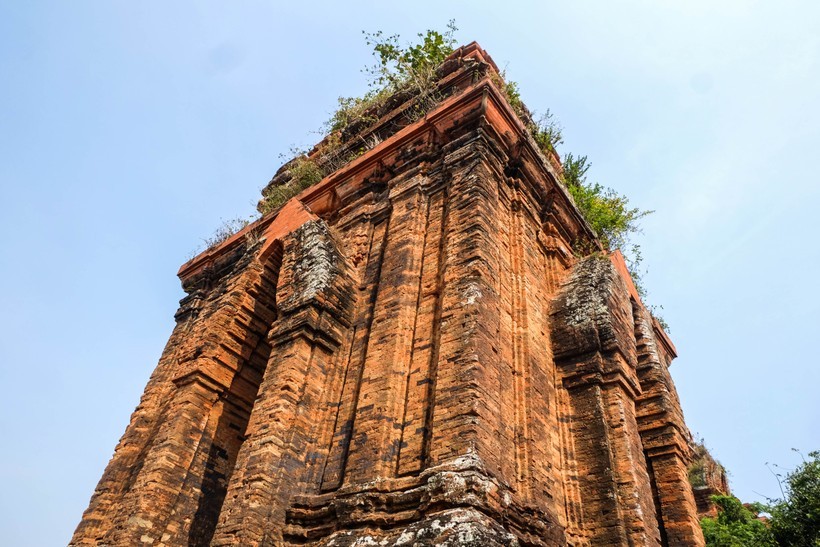 |
| The Bia Tower (Posah) is located 22m from the Gate Tower to the South and has a height of more than 10m. Photo: Hoang Vinh |
Gopura Tower, which is located to the East, has the same shape and structure as the Kala main temple but is much smaller with fewer details. The tower is a brick structure and is 13m high. Since it functions as a gate leading to the temple and tower area, the tower has two connecting gates in the East-West direction and is located on the same axis as the central tower door on the top of the hill.
The main gate arch resembles a javelin with many layers in a row soaring high, the other two sides are gates of the same size. Around the foot of the tower, there are concave longitudinal grooves, forming tall, elegant, and gentle columns.
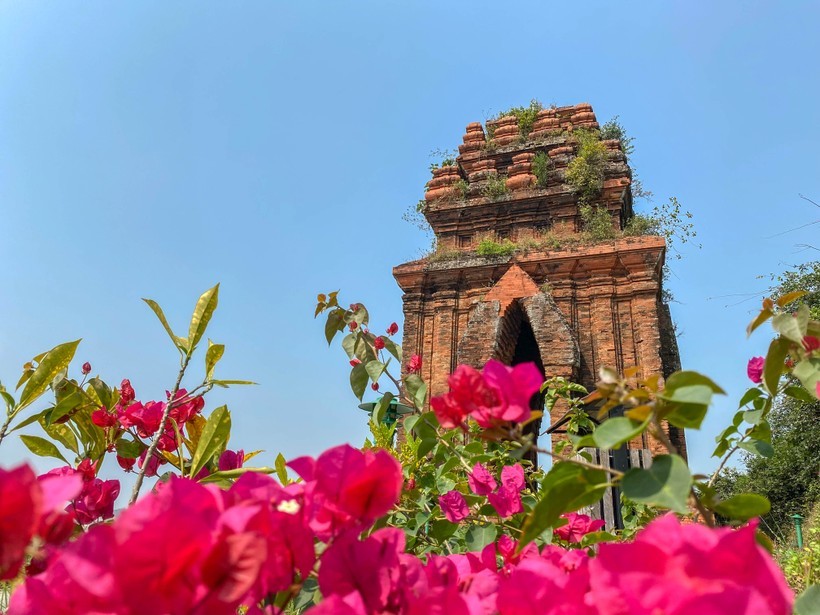 |
| Photo: Hoang Vinh |
The tower foundation and body are separated by a laterite layer. The decorative motifs of the base are double pillars carved with stylized double petals symmetrically.
The Main Tower is 22m in height. The architecture of Banh It Towers bears the Binh Dinh sculptural style of the 12th century with small, embossed lines on the walls. Leaf and flower-shaped motifs are only found on the edges of the roofs, and dancing senses are found on false gates.
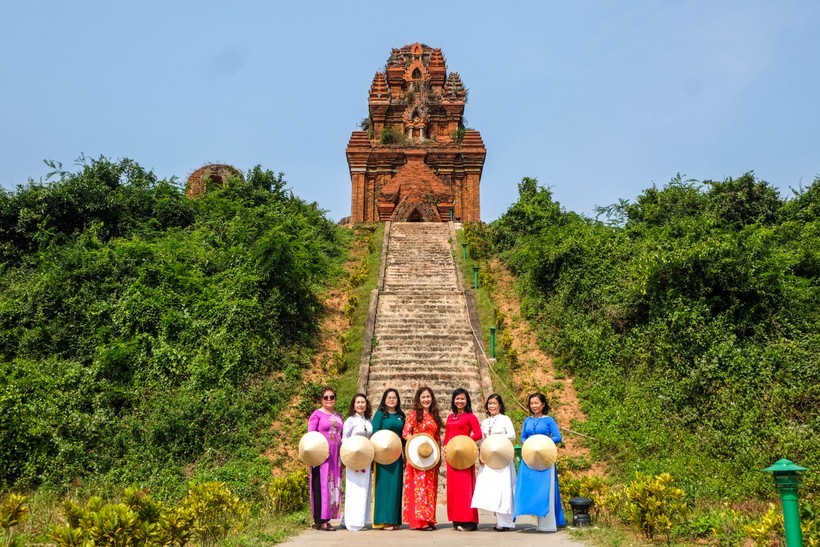 |
| The Main Tower (Kalan) located on the top of the hill is the largest and tallest tower of the 4 remaining ones in the relic. Photo: Hoang Vinh |
Carvings of dancing girls and many valuable sculptures such as the stone statue of Siva, a statue of Ganesa, a statue of goddess Uma, and a bronze statue of Bhahma, were discovered here during the French domination period (and brought to France).
The Bia tower (Posah) is located about 22m from the Gate Tower to the South and has a height of more than 10m. It has four sides with gates in four directions: East, West, South, and North.
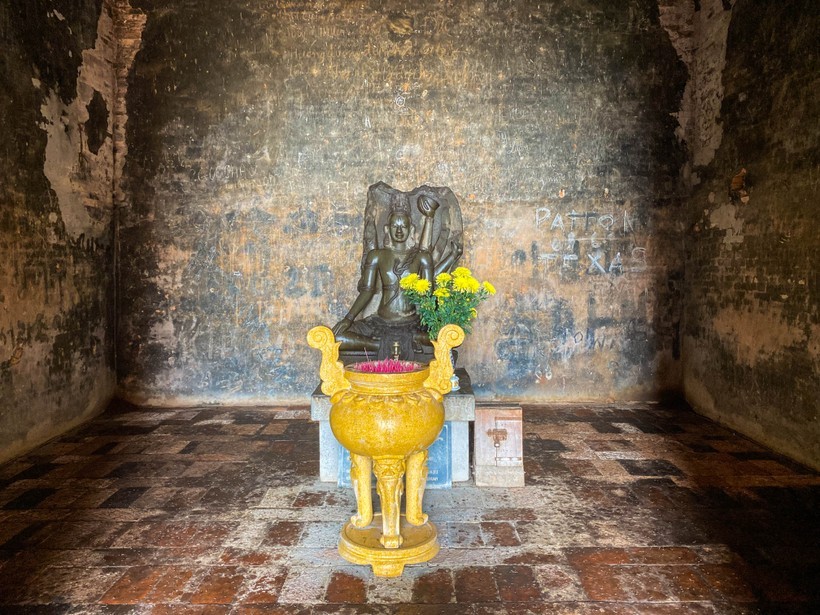 |
| The statue of Shiava inside the Main Tower. Photo: Hoang Vinh |
Like other Champa towers in Binh Dinh, the Main tower has 4 gates in which one main gate faces Southeast, the different three sides are three false ones. It has the shape of five vertical columns, and double grooves, both making the wall solid and creating an elegant shape.
To get to the towers, tourists need to conquer a small sloping road paved with bricks and lined by tree shapes. On the peak at a few dozen meters above sea level, not only can you sense the boundless of heaven but also can take a panoramic view of scattered houses, green farms in the villages, and winding rivers and streams below.
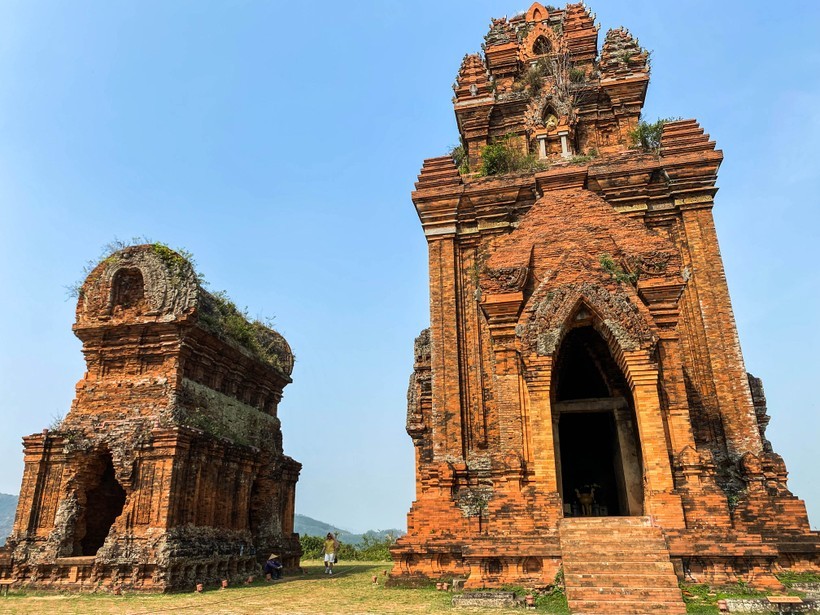 |
| The Main Tower (on the right) and Fire Tower (on the left). Photo: Hoang Vinh |
Inside the ancient buildings are splendid bas-reliefs – which are a great example of Cham craftsmanship. Among the silence, tourists can just about hear the twitters of birds and bats nesting in the main tower.
The name of the complex comes from the shape of the tallest tower with its peak which looks like a “banh it” (three-cornered glutinous rice cake filled with green bean paste and meat).
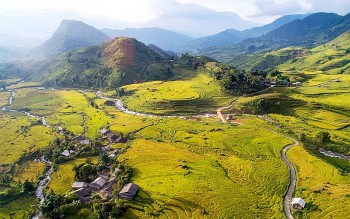 | Conquer The Beautiful Ta Giang Phinh Village Of Sapa Ta Giang Phinh village, located at the foot of the majestic Ngu Chi Son mountain, is a lovely and beautiful tourist attraction with amazing terraced ... |
 | Meet Hoi An's Speedy Seamstresses You may have heard of Hoi An's antique houses, handicraft villages, and appetizing cuisine. But do you know that it is also “the capital of ... |
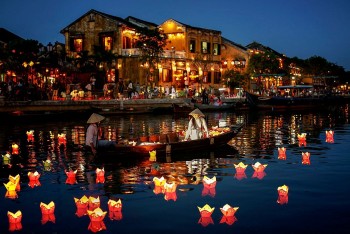 | Top 9 Must-visit Destinations In Vietnam The Travel, a Canadian traveling website, has recommended the top 9 best and most beautiful natural destinations for you to visit in Vietnam. |
Recommended
![[Photo] Peace Boat delegates immersed in Quang Ninh's Hues](https://vietnamtimes.org.vn/stores/news_dataimages/2025/052025/03/13/15ba8cdc6fa53a282f0ef99e14eb9cc5.jpg?rt=20250503130632) Multimedia
Multimedia
[Photo] Peace Boat delegates immersed in Quang Ninh's Hues
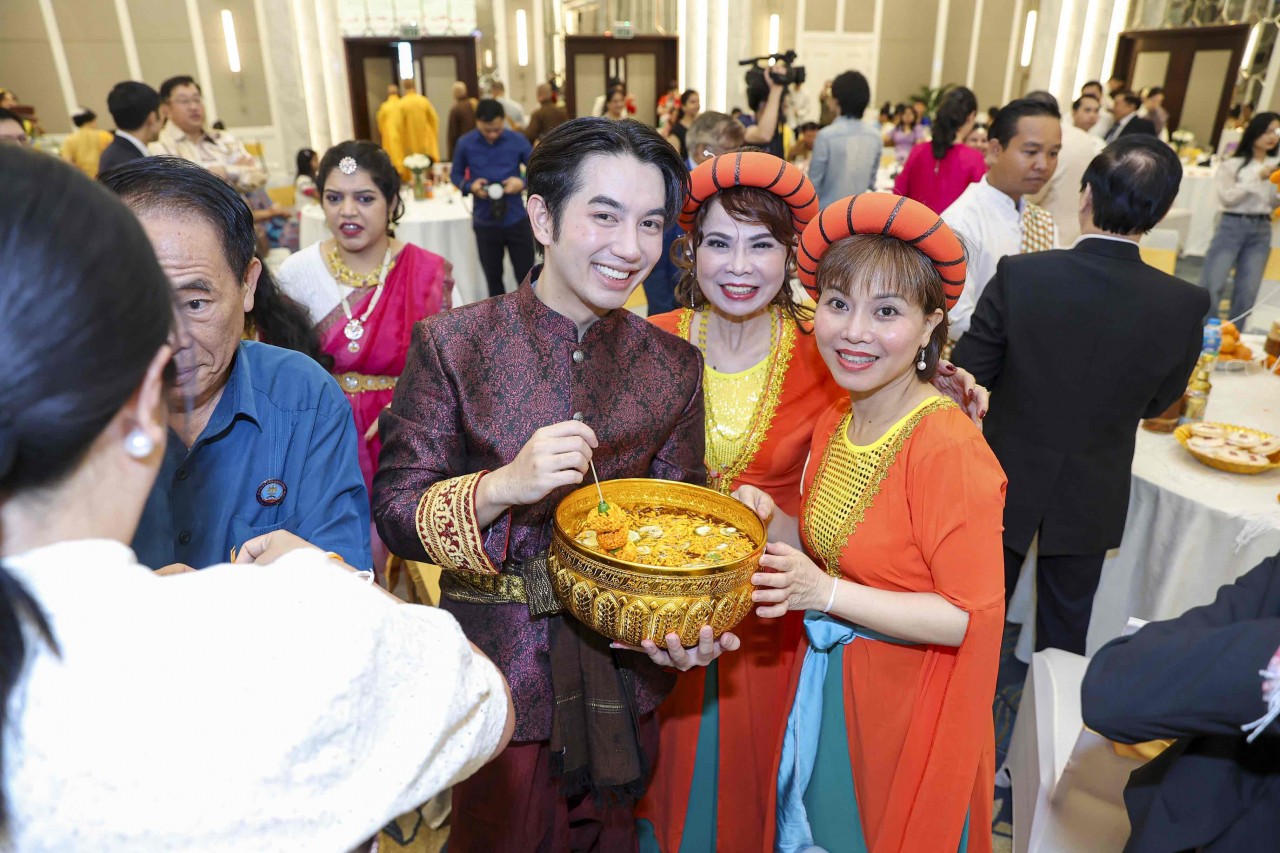 Multimedia
Multimedia
Hanoi Hosts Friendship Exchange Celebrating 2025 Traditional New Year of Asian Countries
 Multimedia
Multimedia
Vietnamese People's Army Forcers in full dress parade rehearsal to celebrate the 50th anniversary of National Reunification
 Multimedia
Multimedia
In pictures: Fireworks Display in Hanoi Celebrates national reunification day
 Multimedia
Multimedia
Phong Nha-Ke Bang National Park Named Top Adventure Travel Site
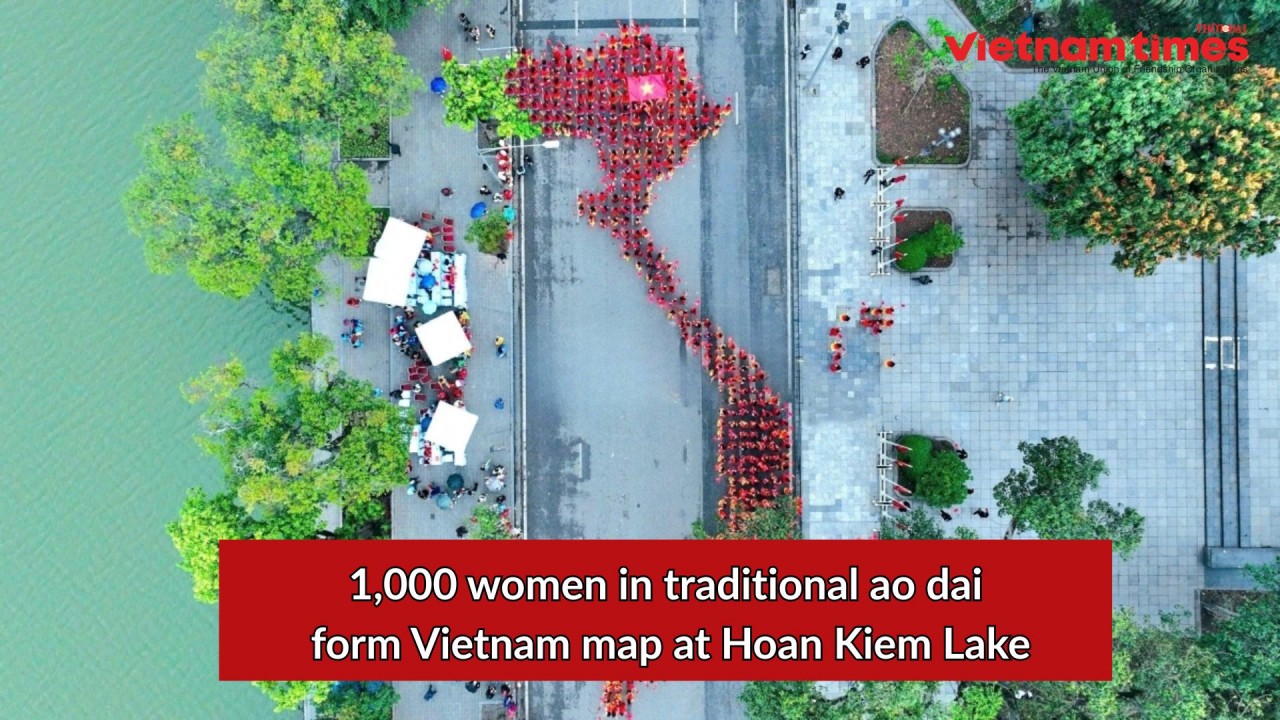 Multimedia
Multimedia
1,000 Women in Traditional Ao Dai Form Vietnam Map at Hoan Kiem Lake
 Multimedia
Multimedia
Vietnam’s Textile Industry Strengthens Position in Global Supply Chains
 Multimedia
Multimedia


